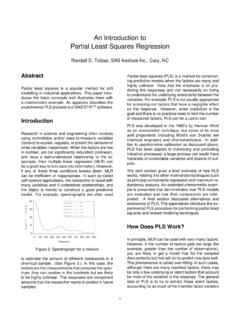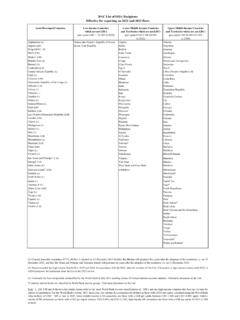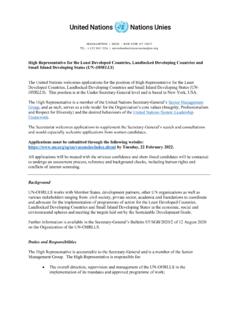Transcription of Participant Observation - SAGE Publications Inc
1 758753 Participant ObservationWHAT IS Participant Observation ? Participant Observation is in some ways both the most natural and the most challenging of qualitative data collection methods. It connects the researcher to the most basic of human experiences, discovering through immersion and participation the hows and whys of human behavior in a particular context. Such discovery is natural in that all of us have done this repeatedly throughout our lives, learning what it means to be mem-bers of our own families, our ethnic and national cultures, our work groups, and our personal circles and associations.
2 The challenge of harnessing this innate capability for Participant Observation is that when we are Participant observers in a more formal sense, we must, at least a little, systematize and organize an inherently fluid process. This means not only being a player in a particular social milieu but also fulfilling the role of researcher taking notes; recording voices, sounds, and images; and asking ques-tions that are designed to uncover the meaning behind the behaviors. Additionally, in many cases, we are trying to discover and analyze aspects of social scenes that use rules and norms that the participants may experience without explicitly talking about, that operate on automatic or subconscious levels, or are even officially off limits for discus-sion or taboo.
3 The result of this discovery and systemization is that we not only make ourselves into acceptable participants in some venue but also generate data that can meaning fully add to our collective understanding of human Observation is used across the social sciences, as well as in various forms of commercial, public policy, and nonprofit research. Anthropology and sociol-ogy, in particular, have relied on Participant Observation for many of their seminal 76 COLLECTING QUALITATIVE DATA insights, and for most anthropologists and many sociologists, doing a Participant Observation study at a field site is an important rite of passage into the discipline.
4 Bronislaw Malinowski s (1922) work among the Trobriand Islanders is not only one of the foundational works of ethnography, but it is also one of the earliest to both exem-plify and articulate the value of Participant Observation . Sociologists also conducted Participant Observation studies and discussed the use of the technique early on, including Beatrice Webb (1926) in the 1880s and the Chicago school of urban sociolo-gists in the 1920s (Park, Burgess, & McKenzie, 1925).For most people, these early studies create the iconic images of Participant Observation being performed by either an anthropologist a somewhat field-worn character living in a remote village learning the ways of an exotic culture by deep and lengthy immersion in the day-to-day lives of the people or an urban sociologist becoming wise in the ways of a gritty inner-city slum.
5 (The anthro-pologist image has produced the old joke that a household in a native village consists of a married couple, their parents, their children, and the graduate stu-dent. When you retell this joke, feel free to insert your favorite study culture and locale for the native village.) While these images of Participant Observation focus on the sort of long-term research endeavor exemplified by ethnography, the tech-nique is very flexible and can be employed to great benefit in addressing a range of research objectives. Many Participant Observation studies are not as lengthy in duration as ethnography, are less comprehensive in scope, and are conducted in relatively mundane locations.
6 But even when it is used on a limited basis, there is no denying the power of this technique to produce penetrating insights and highly contextual any setting in which people have complex interactions with each other, with objects, or with their physical environment can be usefully examined through Participant Observation . Since doing Participant Observation means being embedded in the action and context of a social setting, we consider three key elements of a par-ticipant Observation study: 1. Getting into the location of whatever aspect of the human experience you wish to study.
7 This means going to where the action is people s communities, homes, workplaces, recreational sites, places of commercial interaction, sacred sites, and the like. Participant Observation is almost always conducted in situ. 2. Building rapport with the participants. The point of Participant Observation is that you wish to observe and learn about the things people do in the normal course of their lives. That means they have to accept you, to some extent, as someone they can be themselves in front of. While you don t necessarily have to be viewed as a complete insider, a successful Participant observer has to inspire enough trust and acceptance to enable her research participants to act much as they would if the researcher were not 3 Participant Observation 3.
8 Spending enough time interacting to get the needed data. The informal, embedded nature of Participant Observation means that you cannot always just delve straight into all the topics that address your research issues and then leave. You must spend time both building rapport and observing or participating for a long enough period to have a sufficient range of experiences, conversations, and relatively unstructured interviews for your analysis. Depending on the scope of the project and your research questions, this may take anywhere from days to weeks, months, or even years, and it may involve multiple visits to the research site(s).
9 There is a reason that the phrase you had to be there is a clich used by those who feel their verbal descriptions have not fully captured the essence of some scene or event. The phrase encapsulates a genuine truth there are often important elements of human experience that are only visible to those who are actually there. Participant Observation excels in capturing these elements, particularly: Rules and norms that are taken for granted by experienced participants or cultural insiders For example, unspoken rules exist about who sits where at a meeting, what sort of encouragement listeners give to speakers to keep them talking (or deny to them in order to get them to shut up!)
10 , how many times a guest must refuse food before accepting it from a host, and so on. While these rules can be elicited through interviews, it is often more effi-cient to learn them in situ and as they happen. Routine actions and social calculations that happen below the level of con-scious thought For example, things like the movements of parents when loading and unloading vehicles when both cargo and children are part of the scene or unconscious adjustments that salesmen make to their pitch in response to equally unconscious cues from potential buyers.

















![À o } } µ v ] ~ } ( í í & µ Ç î ì ... - United Nations](/cache/preview/6/8/a/d/6/2/7/a/thumb-68ad627a8e8bb0028fb1d792ee150919.jpg)
